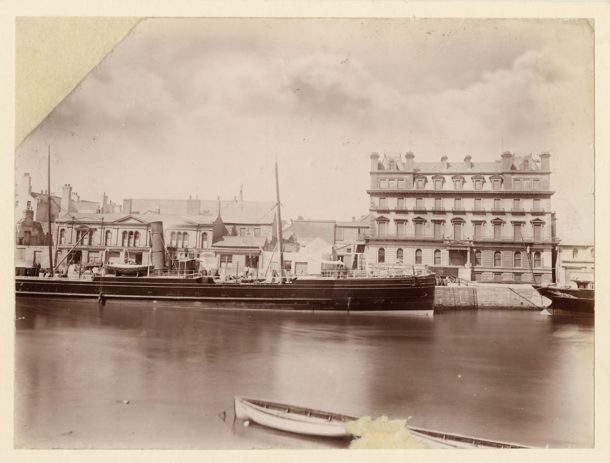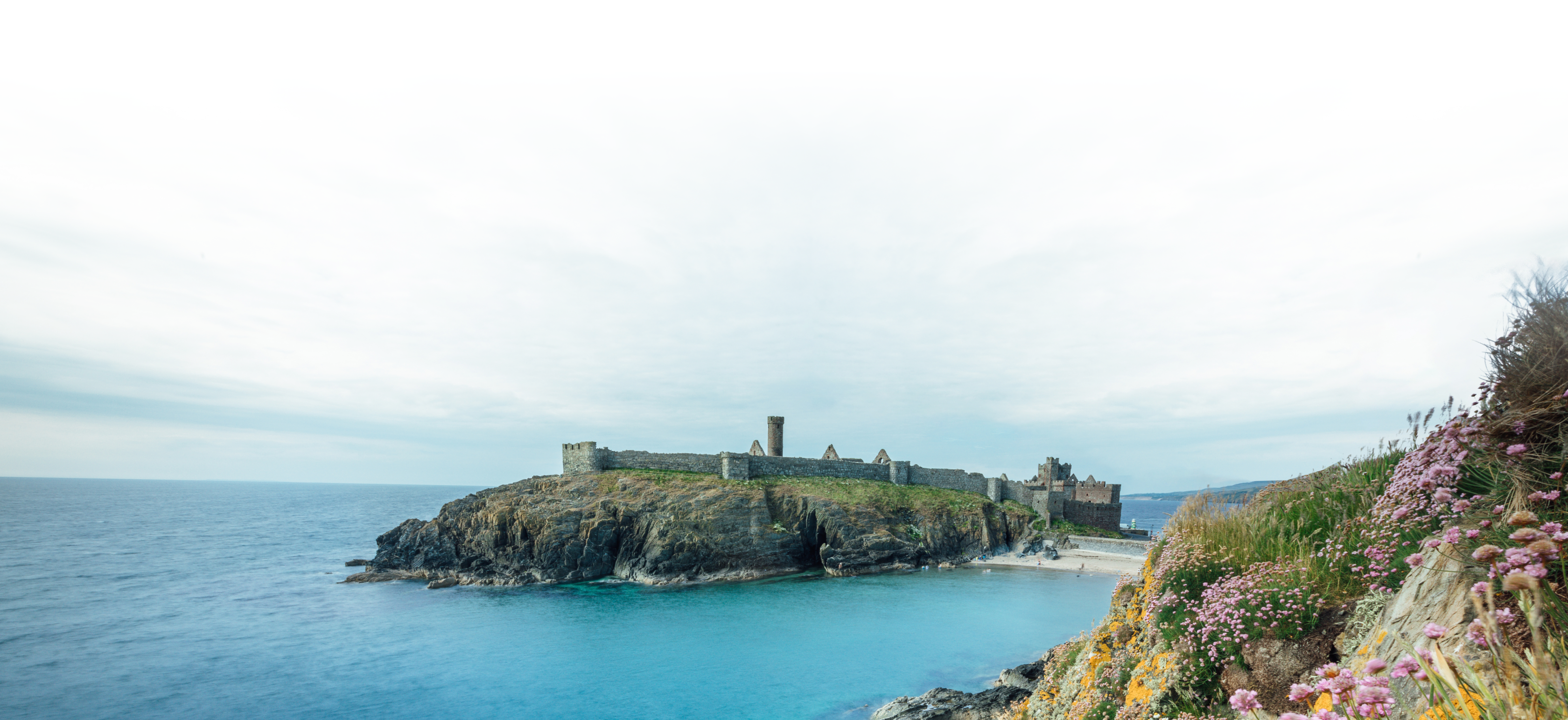With almost two centuries of voyages across the Irish Sea intertwined into the Isle of Man Steam Packet Company’s rich history, it is no surprise that it holds a dear place in the hearts of so many.
From our very first crossing in 1830 to the present day with the exciting development of a new bespoke vessel underway – it is with great pride to have provided an unbroken lifeline connecting the Isle of Man to the United Kingdom for all this time.
Along the way there have been many individual stories that have touched our hearts. One such story is Stan Lawler’s who wrote to us recently to share his fond memories of sailing on our ferries and holidaying in the Isle of Man as a young boy. We couldn’t help but share…

Me and King Orry Or Should I say ‘King Orry and I’?
In this story, I am referring to a ship of which I have long lasting memories and not the Gaelic King after whom the ship was named. I also have to consider the fact that although the ship had a man’s name, they were always known as ‘she’ by their crews.
The particular ‘King Orry’ to whom this story is dedicated was launched in November 1945 and built in the yard of Cammell Laird, Birkenhead. She came into my world in 1948 when I went on holiday for the first time with my father to the Isle of Man, as most working-class families in Manchester did at that time in the month of August. This was when all the Cotton Mills and factories closed for what was called ‘Wakes Week’ and people went away to either Blackpool or the Isle of Man. I have a few connections with not only the ship, but the Island and, of course, the ever-present Isle of Man Steam Packet Company.
The holiday started on Friday evening when my father and I, dressed for a long journey, set off from our house in east Manchester and boarded the trolley bus to the Railway station where we hopped on the train to Liverpool. The weather was cool, and we were dressed not for the bus ride but for the sea crossing from Liverpool to Douglas in the Isle of Man. Our final destination was a house close to the museum in Douglas where an old friend of my father lived. They had known each other for many years as he was a retired watchmaker who had opened his house to paying guests during the holiday season.
The train journey was short, noisy and cold and as we arrived at the dock, I got my first look at King Orry, waiting for us to board her/him. With our one and only suitcase, we walked on to her deck, having shown our tickets. On the ship, there were two classes of passengers. The first and more expensive was ‘saloon’ with the less expensive ‘steerage’, which was basically the open deck. Here we found deck chairs on which to spend our time until dawn of the Saturday when we were due to arrive.
Soon all the passengers were aboard, the mooring ropes were cast off and, with the ship moving slowly, we left, heading into the Irish sea at a speed of which I had no knowledge. I think that it was in knots and not miles per hour. It was dark, wet and windy but I was all for walking about the ship and it was then that I noticed a lot of the passengers being seasick, a situation that did not affect me.
Later in life it was explained to me that when I was born in 1941, my father was away working because of the War. He was employed as a plater at Cammell Laird and as my mother had died three weeks after I was born, my dad’s sister would take me to see him on a regular basis. To do this, it was necessary to take the Mersey ferry across from Liverpool to Birkenhead and I was told that those trips helped me from being seasick as the Mersey could be rough at times.
So here we were sailing to the Isle of Man and this is where the next connection happened. During the night, my father took me to one of the lower decks and it was there that he pointed to a row of rivets around a doorway. ‘I put those there’ he said, touching the row, and then he pointed to others which he said he was proud of. Of course, I had no idea what he was on about but by that point we were near the engine room which was noisy. I wanted to go to see the Captain but was told that it was not allowed as he was always very busy. The rest of the journey was straightforward and as the sun was rising, we could see the harbour coming into view so got ready to leave the ship.
When disembarking the ship, I noticed all of the vessels with the same colour scheme as King Orry in the harbour, each with the famous three legs of Mann on them. This was where my interest really woke up to all that I saw there. It was much later I found out all about the Isle of Man Steam Packet Company ships, their Captains and the history of the line.
To me, having never been on holiday before, the journey was part of the fun and during the voyage my dad told me bits and pieces about the ship, one being that Steam Packet Company ships had rudders at both bow and stern to help them get safely into harbour. Until now I have never been able to find out if that was true or if it was one of my dad’s stories, however my friends at the Steam Packet Company have confirmed it – it is factual!
After a leisurely morning drinking tea and eating toast in a local café, we arrived at the house we were staying at. This was where I met my dad’s friend who still had a workshop, set up like the one that he had in Manchester, where he repaired clocks and watches. I have no memories of that particular museum he lived by, although in later life, museums became part of my working life and I still have connections with our local one.
The holiday was for just one week and we fitted in all the things that were available to do on such a wonderful little Island.
In Douglas there were horse trams travelling along the sea front as well as the Manx Electric Railway on which you could go to the top of Snaefell, the Island’s only mountain, with a stop off at Laxey to allow you to climb to the top of Laxey Wheel – the world’s largest working water wheel – and to enjoy a good look around the area. At the top of Snaefell on a clear day, you are able to see as far as the mainland, but all the times I went to the top I only had a good view once. At the southern part of the Island and again starting in Douglas, you could also take a ride on a steam railway with all the magic of a railway. Many years later in my retirement, I joined a local Narrow Gauge Railway in Northumberland and learned all the skills needed to be an engine driver, with views of a lake but with no sea views.

Staying in Douglas was the place to be for entertainment and I remember the Villa Marina on the sea front where you could be entertained by Ivy Benson and her all-girl band. There was also a theatre, the Gaiety Theatre, just along from there on the promenade which is still open today.
On the other hand, if you liked peace and quiet, you could take a short ride to Port St Mary, or for the history of the Island, there was Peel, an alternative harbour on the west coast for the ships if the weather in Douglas was bad. In Douglas Bay, there is also what is referred to as ‘The Tower of Refuge’.
Douglas was always a busy place to spend time and wherever you were, the view of the harbour always included one or two of the ships getting ready to leave. I could list many of the names of past vessels without referring to the two books that I received as a gift from the Isle of Man Steam Packet Company a few years ago. The books are always close by, safely tucked away in my bookcase.
My list of memories goes on, in Douglas in particular, and there are a few that I will mention. One year I brought my toy submarine with me which had a tube attached to it so that when in water, it rose from under the water and letting go, it would sink. I played with it in the boating pool on the sea front one morning but forgot that part of it was set back and so I fell into the pool fully clothed and had to go back to our accommodation to dry out.
There is a shopping street in Douglas – Strand Street – and one day when we were passing the toy shop, I noticed there was a ‘Dan Dare’ space gun in the window. Dan Dare was many a young boy’s hero at the time and could be found in the popular comic, ‘The Eagle’. My dad agreed to buy me the gun so into the shop we went. That was when things became tricky. The shop owner would not allow me to buy the gun because, as he said: “It is the only one that I have and I am not going to spoil my window display.” We went away empty handed but later in the year, I got one for Christmas.
Some years later, when I was looking into my family history, I found out that one of my maternal ancestors was the owner of a small hotel in Mona Drive, across from where I used to stay. It seems that a lot of my memories return to the Isle of Man, as well as the ships.
Then, there were the coach trips that took you to all the best places on the Island including parts of the Isle of Man TT course and Tynwald Hill, where, in ancient days, Government meetings were held. The highlight was however ‘The Fairy Bridge’. The coach driver would stop the bus and tell the passengers that they had to say good morning to the ‘Fairies’ and raise their hats to ensure that they had a good holiday. Everyone did as they were told and the holiday was very good. I do hope the Fairies enjoyed their time with the visitors.
At this point, I would like to mention another of the famous Isle of Man Steam Packet Company ships. The ship that I would like to mention is Manxman.
In 1978, I moved from Manchester to Northumberland and sadly, on a visit to Sunderland sometime after that, I came across Manxman tied up at a riverside mooring looking very sad indeed, rusty and very much worse than I had once seen her. I was aware that she had been taken out of service and at some point was in a film starring Barbara Streisand but to see her like that was sad for me. Later she was scrapped.
There is another ship that I feel needs a mention and this is Ellan Vannin. Built in 1860, she had a long and well-deserved working life until she was lost in Liverpool Bay in 1909 during a bad storm. There is even a song written about her sinking. During the War of 1939-1945, many of the Isle of Man Steam Packet Company ships were used after being converted for Military use and sadly, Mona’s Queen and Fenella sunk during the evacuation of the British troops from Dunkirk in May 1940.

I have always been grateful to the Isle of Man Steam Packet Company for the gift of the two books as they are constantly reminding me of the ships and the Isle of Man, where I had many good holidays and hold dear memories. I have even discovered that one of the Snaefell ships was broken up in a breakers yard near to where I live.
The last time that my wife and I sailed to the Isle of Man was in 1967, although I have no memory of the ship that took us there and brought us back. I believe that at that time, I had been a passenger of the Isle of Man Steam Packet Company for about twenty years and as I said earlier, the holiday started with the enjoyment of the sea voyage with a proud and long-serving shipping line. The decks were always crowded and I think many people in the Manchester area, of a similar age to myself, will have fond memories of their holidays that included a sea voyage.
Interested in finding out more about the Isle of Man Steam Packet Company?
Check out our blogs which look back at key moments in our history and our historic fleet. Lily Publication’s Steam Packet 190 book is another fantastic resource which delves in the Company’s 190 history in great detail.

Get the latest deals and offers
Join our mailing list to receive early-bird offers, exclusive deals and travel inspiration.
